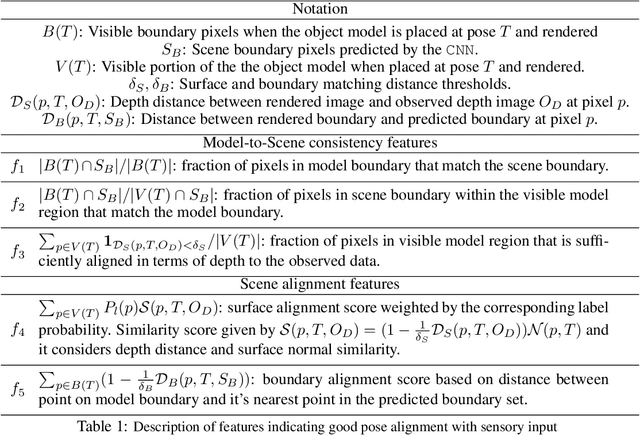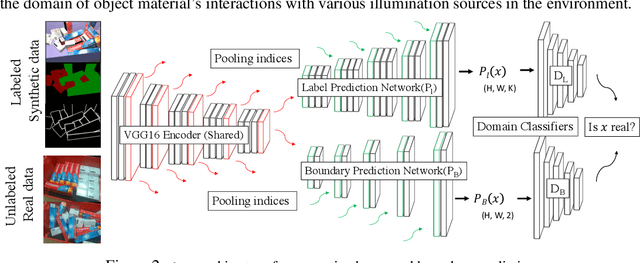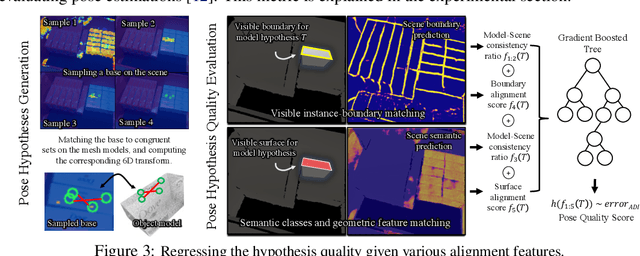Scene-level Pose Estimation for Multiple Instances of Densely Packed Objects
Paper and Code
Oct 11, 2019



This paper introduces key machine learning operations that allow the realization of robust, joint 6D pose estimation of multiple instances of objects either densely packed or in unstructured piles from RGB-D data. The first objective is to learn semantic and instance-boundary detectors without manual labeling. An adversarial training framework in conjunction with physics-based simulation is used to achieve detectors that behave similarly in synthetic and real data. Given the stochastic output of such detectors, candidates for object poses are sampled. The second objective is to automatically learn a single score for each pose candidate that represents its quality in terms of explaining the entire scene via a gradient boosted tree. The proposed method uses features derived from surface and boundary alignment between the observed scene and the object model placed at hypothesized poses. Scene-level, multi-instance pose estimation is then achieved by an integer linear programming process that selects hypotheses that maximize the sum of the learned individual scores, while respecting constraints, such as avoiding collisions. To evaluate this method, a dataset of densely packed objects with challenging setups for state-of-the-art approaches is collected. Experiments on this dataset and a public one show that the method significantly outperforms alternatives in terms of 6D pose accuracy while trained only with synthetic datasets.
 Add to Chrome
Add to Chrome Add to Firefox
Add to Firefox Add to Edge
Add to Edge